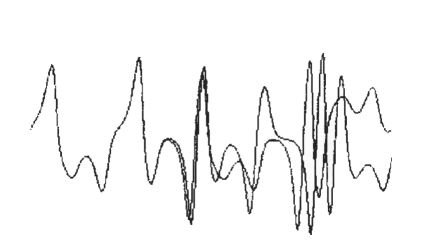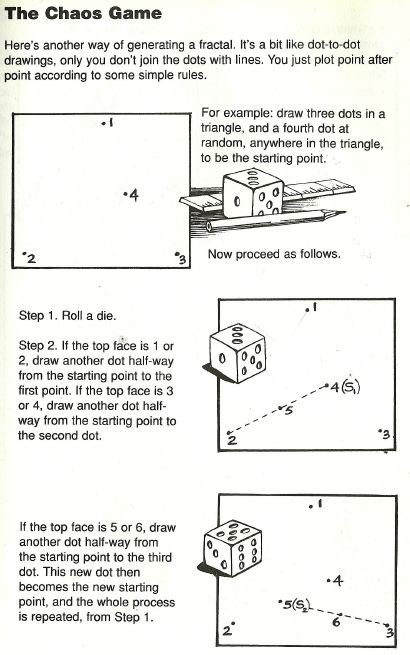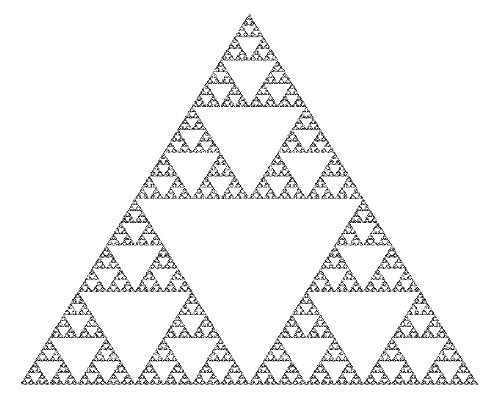When Science found the order in Chaos - Chaos Theory
Discovery of a new science
In the winter of 1961 Edward Lorenz, a meteorology professor at MIT, was examining weather patterns. He made use of a software programme, which he had written, to predict future patterns. The software required an initial data input on which calculations were based for these predictions. The results were then presented in a line graph to illustrate how the weather evolve over time.
On a particular winter's day, Lorenz took a short cut. Instead of starting the whole run over with the same initial data, he began the run midway through with the initial conditions which he typed from an early printout and walked away. When arrived an hour later he saw the unexpected which planted the seed for a new science.
Lorenz expected that the second line graph should have duplicated the first run. At the beginning of the run, the second line followed the first run but slowly started to divert for the original run (Figure 1). As time proceed the lines move further apart. In a few month, all resemblance had disappeared. He might as well have chosen two random kinds of weather out of a hat.

Lorenz has stumbled on what is known today as a dynamical or chaotic system.
A chaotic system's state evolves or changes with time over a state space according to a fixed rule. The chaotic behaviour he observed on the weather graph exists in many natural systems, such as weather and climate as well as systems with artificial components e.g. road traffic. Today chaos theory has applications in several disciplines, including meteorology, sociology, physics, environmental science, computer science, engineering, economics, biology, ecology, and philosophy.
Science has created three properties which define a Chaotic system:
- It must be sensitive to initial conditions
- it must be topologically mixing
- it must have dense periodic orbits
Sensitivity to initial conditions
Sensitivity to initial conditions means that the way the dynamic system evolve is very much impact by the initial condition it started out.
It is also known as the "butterfly effect", after the title of a paper by Edward Lorenz in 1972 to the American Association for the Advancement of Science in Washington, D.C. - Predictability: Does the Flap of a Butterfly's Wings in Brazil set off a Tornado in Texas?. The flapping wing represents a small change in the initial condition of the system, which causes a chain of events leading to large-scale phenomena. Had the butterfly not flapped its wings, the trajectory of the system might have been vastly different.
Topological mixing
Topological mixing describes how two components will react when they are allowed to interact with each other. For example, mixing a lot of fluids together can be more complicated than anticipated. The density and temperature of each of the fluids will prevent the system from pure mixing to something else as determined by these characteristics. This is usually referred to as the behaviour of the system in its phases pace. The phase space represents all the different possible results of the mixing of the fluids.
The dynamic system will evolve or develop over time to fill every region of the phase space. These various states which will fill the phase space will overlap with each other, and therefore it is referred to as mixing.
Density of periodic orbits
If I float a piece of wood down a river, the path of the piece of wood can be described as an orbit. In this example the orbit cannot be repeated as the piece of wood isn't going to go back up to the beginning of the river. If we have done the same exercise at a Walt Disney Water Park where the "river" is running around the park, we would see the piece of wood past us from time to time if we stood still at the same point for a while. This repeating is a periodic orbit.
If we put a tracker on the piece of wood and plot its movements on a chart as it goes around, we will find that the piece wood is repeating its course, but it does not follow its exact previous path. We do notice that these paths are near to each other and overlap a lot of times.
If we see these line for what they are – a lot of points, we can say that these points always occur near to each other. These periodic orbits are tightly connected. Hence the statement that a Chaotic system periodic orbits got a high density.
Chaos Game
To demonstrate the information provide above, which can sometimes be very abstract, let us do an experiment which is more concrete to human experience. We are going the play the Chaos Game. I am going the make use of the explanation of Lesmoir-Gordon, Rood and Edney in their book "Fractal Geometry".

I do agree it is not much of a game as only one player is playing it and the game does not allow for a lot of choices. But if you have the patience to continue and perform the explained steps over and over a pattern will begin to emerge after a while – the Sierpinski triangle.

If we have chosen different points, we could have generated a fern leave or any other fractal. Every picture can be encoded as a fractal formula like this. This is true because the definition of Chaotic system states that:
"A chaotic system's state evolves or changes with time over a state space according to a fixed rule."
The key is to apply this "fixed rule" over and over to generate the order which is hidden in the Chaotic system.
There is order in chaos.
Sources:
Lesmoir-Gordon, N. Rood, W and Edney, R. "Introducing Fractal Geometry", McPherson's Printing, Victoria, Australia
http://scienceblogs.com/goodmath/2010/01/26/more-about-dense-periodic-orbi/
https://en.wikipedia.org/wiki/Chaos_theory
https://en.wikipedia.org/wiki/Phase_space
http://scienceblogs.com/goodmath/2009/06/12/defining-dynamical-systems/
http://functionspace.com/topic/4255/Topological-Mixing
http://mathinsight.org/definition/dynamical_system
http://www.abarim-publications.com/ChaosTheoryIntroduction.html#.V-KmcPB97IU
https://en.wikipedia.org/wiki/Chaos_game
http://www.dictionary.com/browse/attractor
http://math.bu.edu/DYSYS/chaos-game/node1.html
https://steemit.com/steemit/@dana-edwards/swarm-intelligence-in-honey-bees-and-attractor-patterns-in-humans
https://steemit.com/steemit/@dana-edwards/attractor-patterns-and-attractor-tokens
https://steemit.com/science/@vadimberkut8/attractor-beauty-in-math
I love this piece. I was first exposed to the world of chaos theory as I was learning about fractals in mathematics while studying engineering as a young adult. I remember reading in a book on fractals about how this pattern recurs in nature to the point it was described as the fingerprints of God.
I have upvoted this piece and featured it in my hidden gems blog. Awesome content- great job.
Thank you :)
Fascinating to say the least, and well explained @krabgat !! Gets my vote. Now we know why Chaos wins over Order..it is more organised {grin}
I see you understand @themagus ;)